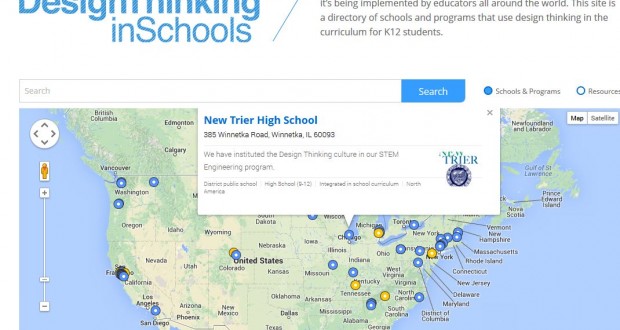Sandy Speicher of IDEO reports that many educators and school leaders are working to integrate design thinking into their classrooms and IDEO and the K–12 Lab Network at Stanford’s d.school have been a part of making some of these programs happen.
A global movement is unfolding, and in response to the overwhelming interest around design thinking in schools, IDEO and the d.school have created a new directory — Design Thinking in Schools — to highlight the network of institutions that are at the forefront of this movement.
What is design thinking? Loosely put, design thinking is a set of tools, methods, and processes by which we develop new answers for challenges, big and small. Through applying design thinking to challenges, we learn to define problems, understand needs and constraints, brainstorm innovative solutions, and seek and incorporate feedback about our ideas in order to continually make them better. The more we apply design thinking to the challenges we see, the deeper we strengthen the belief in our ability to generate creative ideas and make positive change happen in the world.
The need for design thinking. This movement to build a generation of design thinkers could not be more timely or more relevant. We are living in an age of increased complexity, and are facing global challenges at an unprecedented scale. The nature of connectivity, interactivity, and information is changing at lightening speed. We need to enable a generation of leaders who believe they can make a difference in the world around them, because we need this generation to build new systems and rebuild declining ones. We need them to be great collaborators, great communicators, and great innovators.
As we help today’s students build their foundation of core academic knowledge and skills, we also need to look at the ways we are helping our youth build their confidence in their abilities to create. From name badges to state economies, we need our youth to know that they can empathically and intelligently shape the world. We need to help them develop the tools to create change.
 Hannah Emmanuele
Hannah Emmanuele


